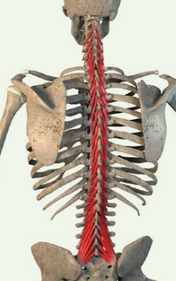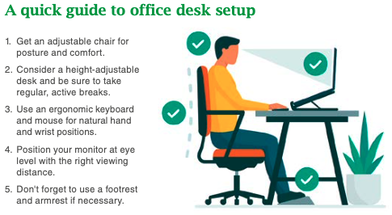Truck driving is a physically demanding occupation that can take a toll on the body. Prolonged sitting, whole-body vibration, and heavy lifting can put truck drivers at a higher risk for long-term back conditions. Poor diet and lack of exercise, which can be challenging to control in this line of work, further contribute to these issues.A 2022 study published in the journal BMC Public Health revealed that truck drivers are more prone to obesity, high blood pressure, mental health problems, and musculoskeletal disorders, including back pain. In fact, over one-third of truck drivers report experiencing back pain. Long-haul truck drivers are particularly susceptible to back pain that lasts for more than a year.
To address these challenges, effective interventions that focus on prevention and management are necessary. As chiropractors, we conduct thorough assessments of your spine in order find the solutions best for your body. Additionally, we can offer valuable advice on diet, posture, spinal support, and exercise. Weight management and diet Weight management is crucial for many truck drivers; being overweight increases the likelihood of chronic lower back pain. Dietary modifications can support healthy weight loss and help alleviate back pain. We can discuss strategies to improve food choices, especially if you’re covering long distances where options may be limited. Processed meat, high saturated fat and refined carbohydrates (all of which can be in a meat pie!), sugary foods, and a low intake of fruits and vegetables are linked to increased inflammation, which can trigger discomfort. A poor diet can result in a deficiency of essential nutrients and lead to many health problems. Supplementing with micronutrients such as omega-3 fatty acids and magnesium, for example, may provide relief. Posture and exercise Proper posture is essential, particularly when sitting for extended periods. Support the natural curves of your spine, ensuring your eyes face forward, keeping shoulders relaxed, and maintain straight wrists. Furthermore, the elbows, knees, and ankles should rest at 90 degrees. The use of supportive aids can help posture, depending on the truck seat. Improving core strength, which refers to the strength of the abdominal muscles, can also alleviate back pain. These muscles play a vital role in maintaining balance, stability, and posture – as well as facilitating various movements such as bending, twisting, and walking. We can incorporate exercises that target these muscles, to help strengthen your core. If you’re a truck driver experiencing back pain, reach out to us. There are numerous approaches, including chiropractic care, which may help reduce discomfort and improve your overall function.
0 Comments
6/9/2023 0 Comments The ins and outs of backbendsBackbends involve arching your spine backward, creating a deep extension and opening in the front of your body. They’re called "backbends" because they primarily focus on bending your spine in the opposite direction of its natural curves. With this in mind we discuss the benefits and dangers of strong back bends.So, are backbends of any benefit?
Backbends can increase flexibility by stretching the muscles, ligaments, and joints of the front of your body, and also improve strength, function, and posture. We spend so much time sitting and hunched forward, bending backwards reverses this position. There may be other benefits too. In yoga practice it’s believed that poses that open up your body may increase self-confidence, positive emotion, and energy. Are back bends safe to do? Backbends involve moving your spine in ways that may be unfamiliar. To perform them safely requires awareness, caution, and proper technique. If you rush ahead without preparation and conditioning, you could damage your back, especially if you have existing spinal issues. Also, backbends may not be suitable for everyone due to differences in body structure, or existing health conditions. Additionally, not being fit, strong or flexible can increase the potential risk of injury associated with deep backbends. Guidance for safe stretching With that being said, let’s look at some guidance to lower your risk of injuries when doing back bends of any degree. Before you begin, warm up your body with gentle stretches and movements. Ensure your core muscles are engaged and start with slight backward bends. Listen to your body; if you’re ready you can slowly, cautiously work up to a deeper stretch. Use counter-postures like forward bends or gentle twists to balance your practice. Keep in mind that advanced backbend postures are not necessary, you can stick with slight, gentle backward stretches. If you experience any pain or strain in your back, stop. Never force your body beyond its limits. In summary: backbends can be safe and helpful for some people, however it’s important to seek advice before beginning. We can help determine if backbends are suitable for you, what intensity of stretch is best for your body, and advise you on correct technique. You have a unique muscle called the multifidus muscle, which plays an important role in the well-being of your spine. Despite its importance, most people are unfamiliar with this remarkable muscle. Taking the time to learn what its role is in your body and how to strengthen it, may improve your overall function, stability, and even ease pain.This unsung muscle hero works tirelessly to stabilise and protect your spine, while also helping in extending and rotating your back. It holds your backbone firmly and provides strength as you bend and move. By doing so, it effectively reduces pressure on your spinal discs and minimises the risk of injury.
The multifidus muscle is long and thin, consisting of many muscle bundles. Each bundle spans only a few vertebrae, but together, they connect and support most of your spine. Nestled deeply against your backbone, this muscle extends from your pelvis and tailbone to your lower back, mid- back, and neck. Due to its role, a weak multifidus can disrupt vertebral stability, particularly in your lower back. Within your lumbar spine lies a neutral zone, which represents the range of motion that can be achieved easily from a relaxed position with minimal muscular effort. Remaining within this neutral zone requires less energy and places less stress on your spine, resulting in improved functionality, reduced pain, and decreased disability. Just like perfectly aligned car tyres require less effort to move, the same principle applies to your spine. The multifidus muscle works its magic by stabilising your spine without conscious effort, contracting and relaxing as needed. However, injury or weakness can occur, making it harder to maintain a safe and neutral zone. As a result, your spine may begin to subtly ‘wobble’ more than usual, needing additional effort to secure it. This places increased pressure on the surrounding tissues, potentially leading to damage and dysfunction; especially if you’ve undergone back surgery. In fact, damage to this muscle is associated with a condition known as failed back surgery syndrome. Fortunately, you can strengthen the multifidus through regular exercise. One example is "The Superman". To perform this exercise, lie on your stomach on the floor. Extend your arms over your head while keeping your legs straight. Maintain a neutral head position by imagining you’re keeping a ball between your chin and chest. Gently contract your abdominal muscles, and slowly lift your arms and legs off the floor until you feel your lower back engage. Hold this position for two to three seconds, and then repeat ten times, twice. Stop if you feel pain. It’s important to note that the multifidus muscle is not the only muscle that supports your spine and there are a number of strengthening exercises. Talk to your chiropractor first, we can provide advice on customised exercise to ensure optimal results and prevent potential complications. Feel free to reach out to us if you have any questions or concerns. 6/9/2023 0 Comments FarinataFarinata (or socca) is a type of pancake made from chickpea flour which originated in Italy. Fermenting the batter makes it light and creamy and helps increase the nutritional value of the chickpea flour. These can be served as a snack or side dish, or add toppings to make a light meal.Makes 2 large ‘pancakes.’
INGREDIENTS 1 cup chickpea flour 1 tsp apple cider vinegar or lemon juice 300ml water 1 teaspoon salt 3 tablespoons olive or coconut oil (melted) METHOD
Seasonings: fresh or dried herbs, pepper, a sprinkling of grated parmesan. Toppings: Can include any combination of pesto, cheese, olives or vegetables such as zucchini, tomato, peppers. Fermented foods have become popular for their health benefits, but what are they, and are they actually good for us?The process of fermenting foods has been around for centuries and was used as a way to preserve food and improve flavour and digestibility. Over time, fermentation has been linked to many health benefits which have prompted numerous scientific studies.
What are fermented foods? These are foods which have undergone fermentation − a natural process in which beneficial microorganisms like yeast and bacteria break down the sugars, resulting in the production of various nutrients. This process gives fermented foods a unique flavour and aroma. The fermentation process is complex as the microbes are powerful; the slightest change in their environment can produce different products – such as harmful fungi. Therefore fermentation conditions must be carefully controlled to get the desired outcomes. Fermentation can occur naturally in the food or processing situation, such as sauerkraut, kimchi, and some soy products. Otherwise, food can be fermented by adding starter cultures, for example, kefir and kombucha. Are fermented foods beneficial? Most foods can be fermented, like vegetables, fruits, grains, dairy, legumes, and even meat and fish. These foods are all nutritious in their original form, but fermentation adds more health benefits – especially when they contain probiotics. Probiotics occur in many fermented foods, including yogurt, sauerkraut, and miso. Probiotics encourage helpful bacteria and other organisms in your gut, which is very important for many aspects of your health. Are probiotic supplements as good? While supplements can provide certain probiotics, they may not offer the same nutritional benefits as consuming real fermented foods. Fermented foods offer live bacteria and a variety of nutrients which your body can absorb and use more efficiently than supplements. However, supplements may be valuable when it's challenging to obtain sufficient nutrients from your diet, or when deficiencies are identified. Speak to your doctor before adding supplements to your diet. Your doctor can help you avoid the risks that may make your health issues worse. 6/9/2023 0 Comments RSI and how to prevent itAre you aware of the toll repetitive tasks can have on your body? Many of us overlook this, but it's crucial to recognise the potential consequences, such as repetitive strain injury (RSI). In this article, we explore this condition and suggest ways to help prevent it.RSI causes discomfort and pain in your muscles, nerves, and tendons due to repetitive movements and overuse. It commonly affects people engaged in repetitive activities such as: office work, assembly line tasks, construction, retail, music, and sports.
The primary cause of RSI is the overuse of a particular muscle or muscle group; especially when you also use awkward movements. Factors such as poor posture, and exerting yourself too much or when your muscles are tired, contribute to muscle fatigue and damage. This damage can trigger inflammation and swelling, leading to pain, weakness, numbness, and trouble using the affected area. RSI commonly occurs in your upper limbs encompassing your fingers, wrists, hands, forearms, elbows, and shoulders. However, the lower limbs are also susceptible, like ankles, feet, legs, knees, and hips. Additionally, areas such as your neck and back, which are the main areas that affect our patients, are also prone to repetitive strain injuries. This condition results in a range of common disorders, including: bursitis, carpal tunnel syndrome, golfers elbow and tennis elbow, shin splints, tenosynovitis (affecting the sheaths surrounding tendons), trigger finger, and even certain spinal issues. Can you prevent RSI developing? To prevent the development of RSI here are several key measures you can take:
It is also important to prioritise good ergonomic practices; however everyone's needs are different so personalised guidance is essential. Seek expert advice to find the right solutions for you, including suitable equipment, breaks and rest periods, posture adjustments, and exercises if necessary. RSI can cause significant and long term discomfort and disability; if you have questions about this condition, please ask us. Prevention is always better than cure. |
AuthorAdam's Back is a team of dedicated complimentary health professionals. Our aim is to support you in finding drug-free solutions for better health. Archives
July 2024
Categories |
Search by typing & pressing enter







 RSS Feed
RSS Feed